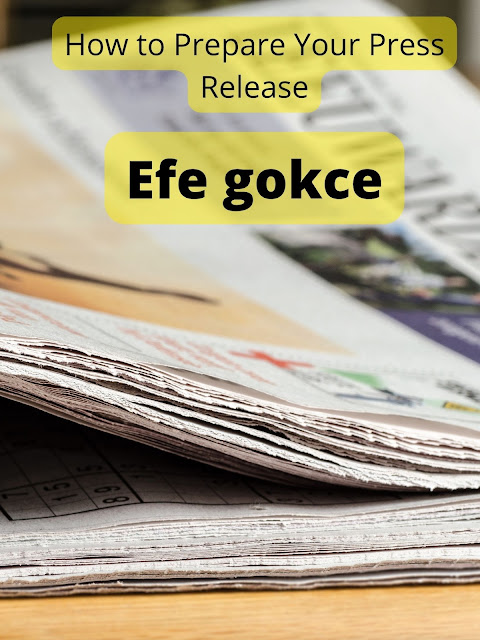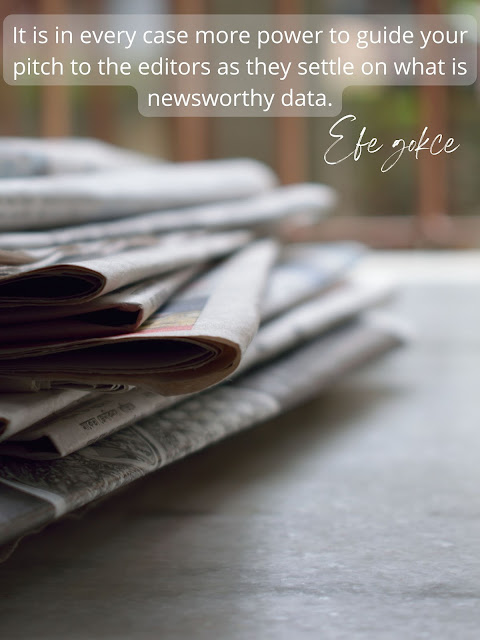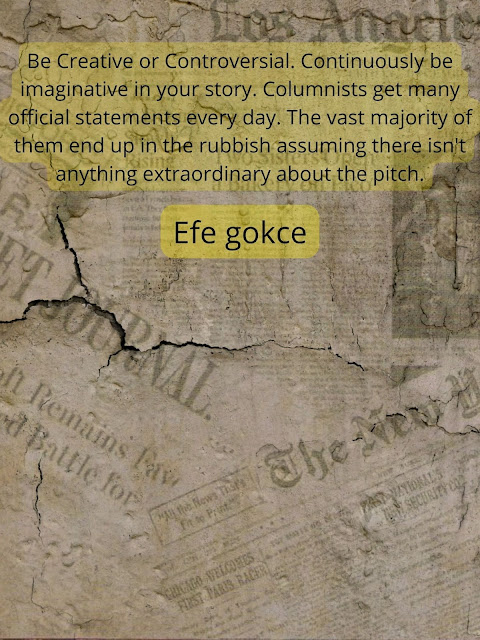How to Prepare Your Press Release | Efe gokce
An official statement carries data to the consideration of the press and broadcast media, and thusly general society, creating exposure. The accompanying rules ought to help you on your way.
• Efe gokce says that it Includes basic information. The delivery ought to respond to the inquiries: who, what, when, where, why, and how.
• Get your story across right on time. Assuming your most memorable sentence or section is dark, muddled, or exhausting, columnists presumably won't try perusing on.
• Keep the delivery succinct - one side if conceivable, and something like two.
• Stay away from language, abbreviations, and shortened forms except if they are for the most part notable by your main interest group.
• Incorporate statements - draft them yourself assuming that need is, yet consistently get them supported!
• Try not to offer misdirecting expressions.
• Ensure your subject and style suit the ideal interest group.
• For occasions, give an exact plan and area, remembering clear data for any open doors for photographs and meetings in a 'Note to Editors' toward the finish of the delivery.
• Give the delivery a short title. The intention is to draw in interest so make it understood and simple.
• Put the date on the delivery.
• Continuously incorporate a contact name and telephone number, and email and web address for additional data.
• Utilize twofold or 1.5 lines dispersing to make the delivery simpler to peruse.
• Check with every one of those required for genuine exactness.
• take a look at spelling, syntax, and accentuation.
The Art of Pitching
Who
• Efe gokce says that It is in every case more power to guide your pitch to the editors as they settle on what is newsworthy data.
• The writers are normally allocated various stories however they can suggest your story assuming they are drawn nearer.
• The same in the media will be the makers of public broadcasts and TV programs.
When
• The best chance to move toward a writer isn't long before he is expected to present his accounts.
• It is prudent that you send your pitch through email and follow up with a call. It might require a couple of additional days before the columnist hits you up on the off chance that your story isn't about an occasion.
What
• Guarantee you have a public statement with all the supporting data. Key staff's contact ideally with their LinkedIn profiles.
• Photographs, drawings, and other visual data ought to be connected from a web-based entertainment document-sharing website. This is to empower the writer to lead further foundation exploration of your story.
• Assuming your story is an impending occasion, guarantee you have advised the various members on the chance of being evaluated during the occasion.
How
a. Pictures. On the off chance that an image is worth 1,000 words, an extraordinary picture merits 1,000,000.
b. Comprehensive versus Selective. A few individuals from the press will possibly cover your story if they are guaranteed a selective inclusion. Assuming you feel that the readership base of the specific press is your main interest group, giving selectiveness might be a decent suggestion.
c. Recount the insider's story. On the off chance that your pitch is about an occasion, welcoming the writer to take part might create a story in light of insider's criticism and assessment. The benefit of this approach is you can offer this to different individuals from the press.
d. Be Creative or Controversial. Continuously be imaginative in your story. Columnists get many official statements every day. The vast majority of them end up in the rubbish assuming there isn't anything extraordinary about the pitch.
e. Schoolwork - Survey/Trend/Insights. The simplest method for creating a piece of hard news is to lead an overview and present your discoveries. This is powerful in situating your organization as the head of your industry.



Comments
Post a Comment